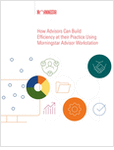Planning for special needs is one area that is often overlooked by advisors—either because the advisor’s clients currently don’t require a plan for a special needs individual or because the client himself isn’t aware of the planning options that exist.
Regardless, recent data shows that as many as one in five individuals will face the need for special needs planning in their lifetime. Because of the moving pieces involved in coordinating available public resources and private planning tools, it is especially important that the financial advisor be informed to help clients maximize the value of their planning dollars and take advantage of newly available tax-preferred savings vehicles specifically earmarked for special needs planning.
Savings Impact on Social Security
Generally, unless a disabled person has access to specifically designed trust vehicles, he or she is disqualified from receiving Social Security disability benefits after accumulating assets worth more than $2,000 (income restrictions also apply to restrict monthly income to $1,170 in 2017, though the amount is higher if the disability is blindness).
Importantly, assets held in qualified special needs trusts are not counted toward the Social Security asset threshold. Qualified special needs trusts must be established for the benefit of disabled individuals who are under age 65. These trusts are generally established and funded by a third party (such as a parent or other family member) and are entitled to claim the higher personal exemption that is available to individual taxpayers (these rules may change if the personal exemption is eliminated through proposed tax reform).
(Related: Social Security Working Retirement Tax: Which Spouse’s Earnings Count?)
Many of the tax preferences that apply to ABLE accounts (discussed below) are not available through the use of a qualified special needs trust, but the $100,000 ABLE account cap does not apply. This allows the client to fund the trust with sufficient assets to meet the needs of the special needs individual without jeopardizing his or her ability to claim government benefits.
Self-settled (self-funded) special needs trusts can also be used to hold assets that are owned by the special needs individual (for example, personal injury settlement awards or inheritances) in order to maintain eligibility for government benefits.
Potential Benefits of ABLE Accounts
ABLE accounts were created by the Achieving a Better Life Experience Act to allow individuals to accumulate up to $100,000 in “ABLE accounts,” which are modeled after Section 529 college savings accounts, without becoming disqualified from receiving Social Security benefits.








 November 16, 2017 at 11:57 AM
November 16, 2017 at 11:57 AM










